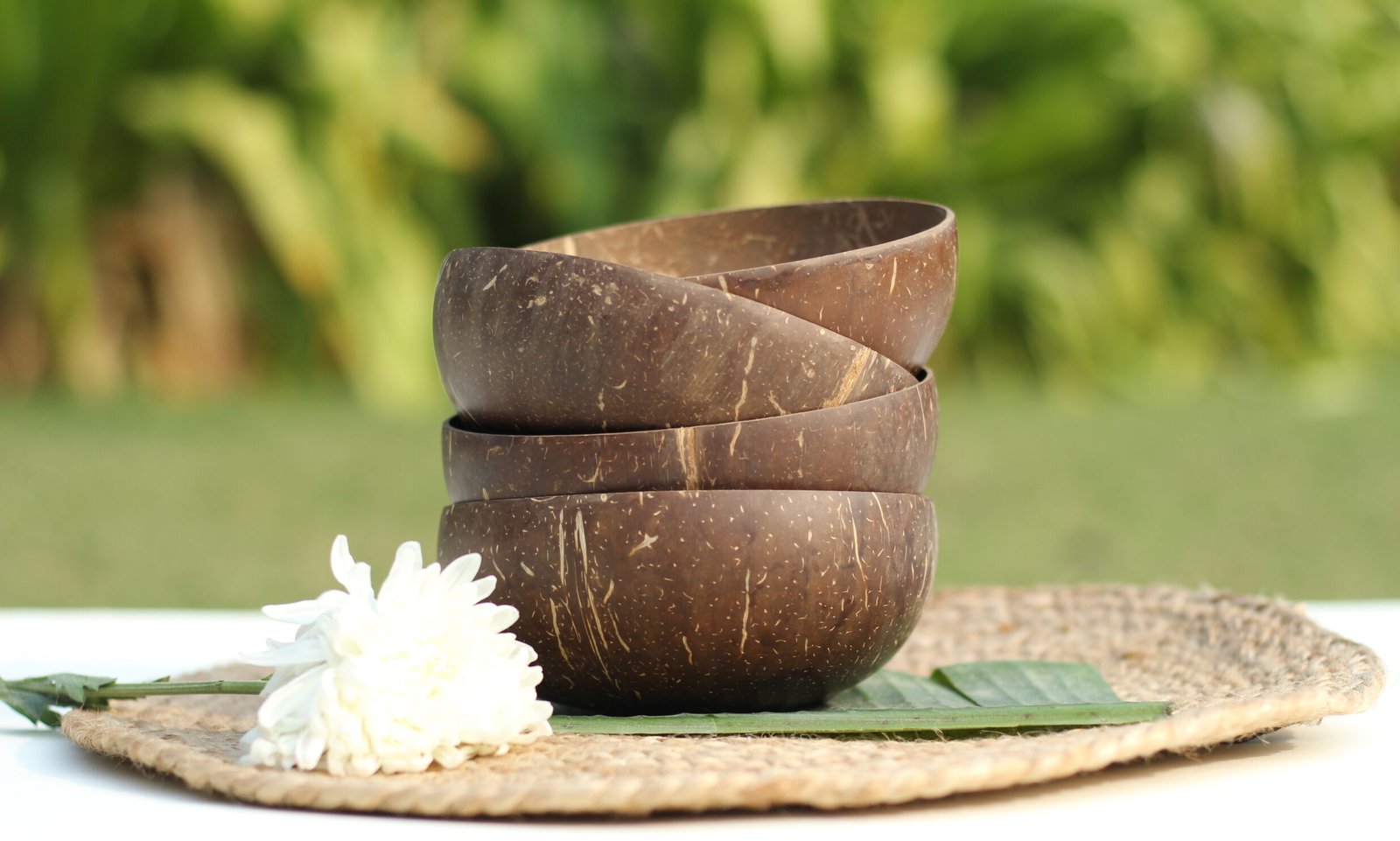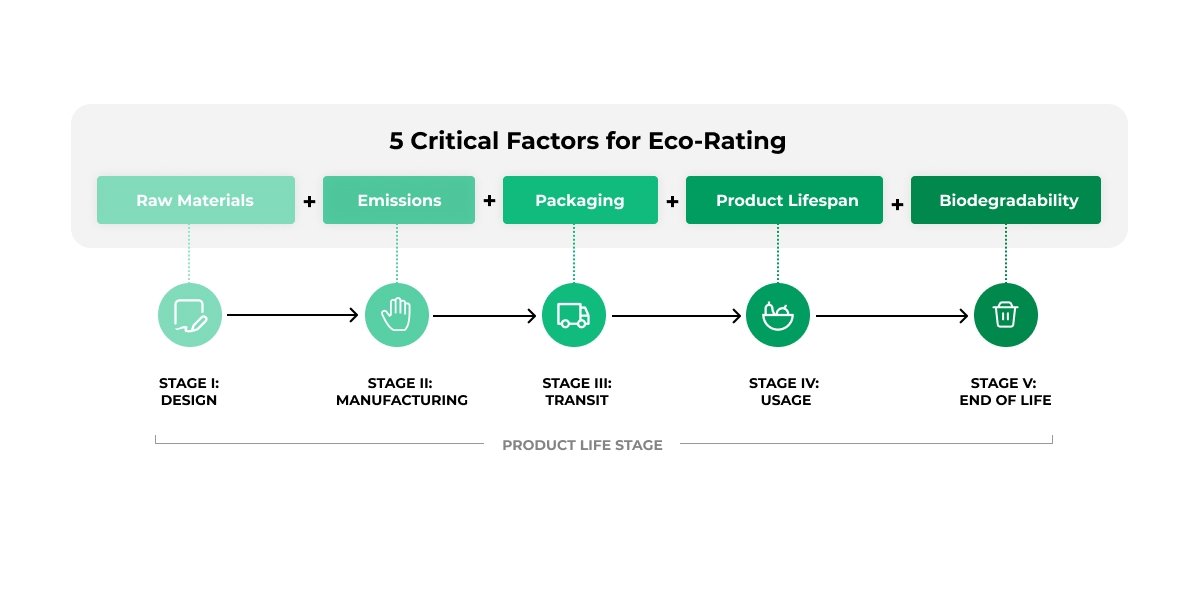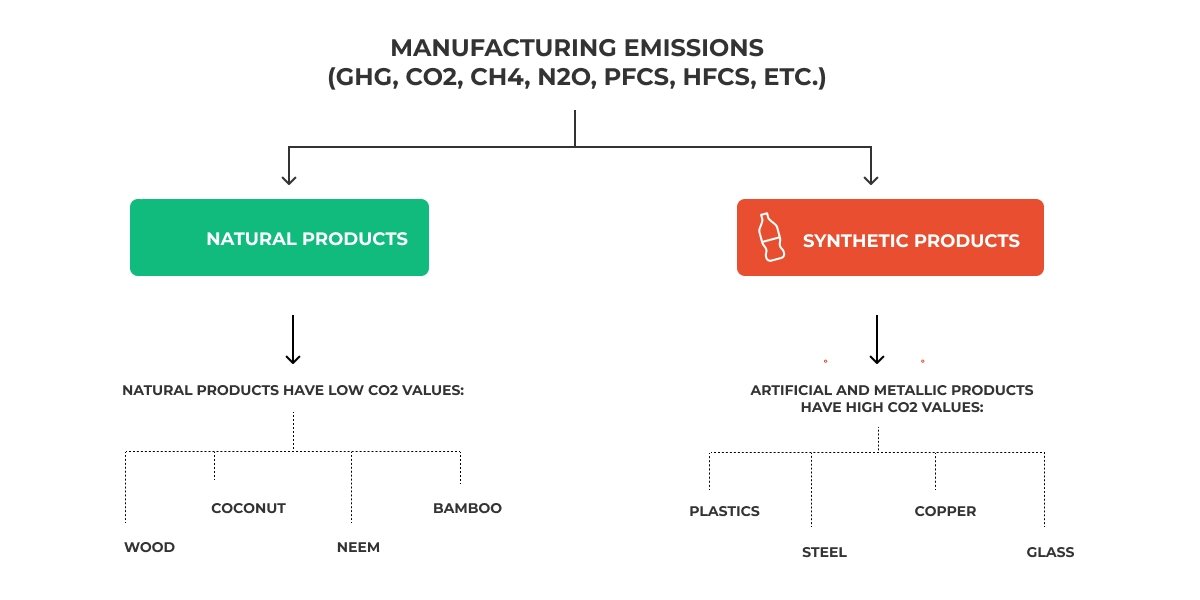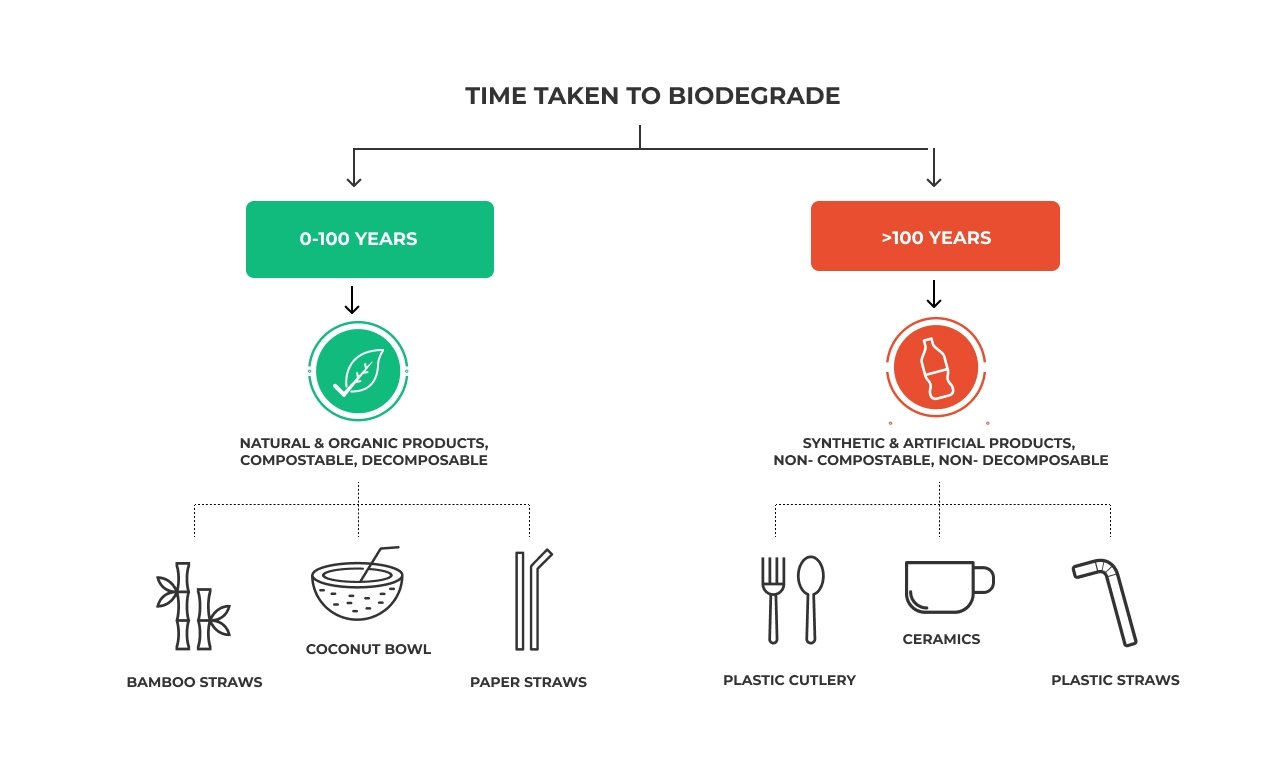BRAND ZERO’S ECo RATING FRAMEWORK
Brand Zero believes in trust and transparency. We want to ensure that everyone is aware of the impacts created by making the choices that lead to a sustainable lifestyle.
After doing extensive research and diving into a pool of countless environmental parameters like plastic-free, toxin-free, safe-to-use, cruelty-free, etc. we wanted to design a framework that could encompass a comprehensible set of factors for practicing a basic, yet essential approach.
Eventually, we came up with a 5 factorial rating system for our products consisting the main environmental aspects of a product’s supply chain process from the perspective of consumers: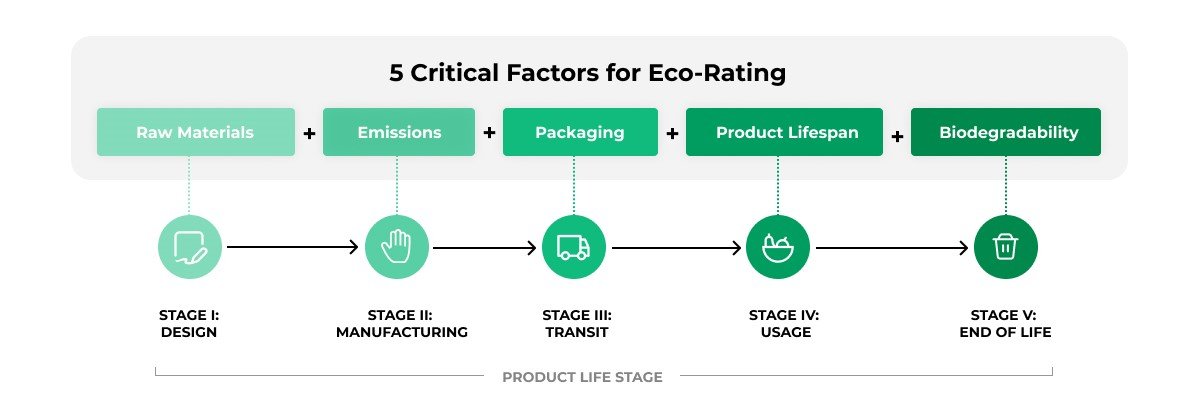
Factor I : Raw Materials
Any new product development has the first stage of product design, where one of the most important aspects to be considered are the raw materials used for making the product.
Raw Materials are the base materials from which a product is made. They can be broadly classified into two types, namely:
- Natural
- Synthetic
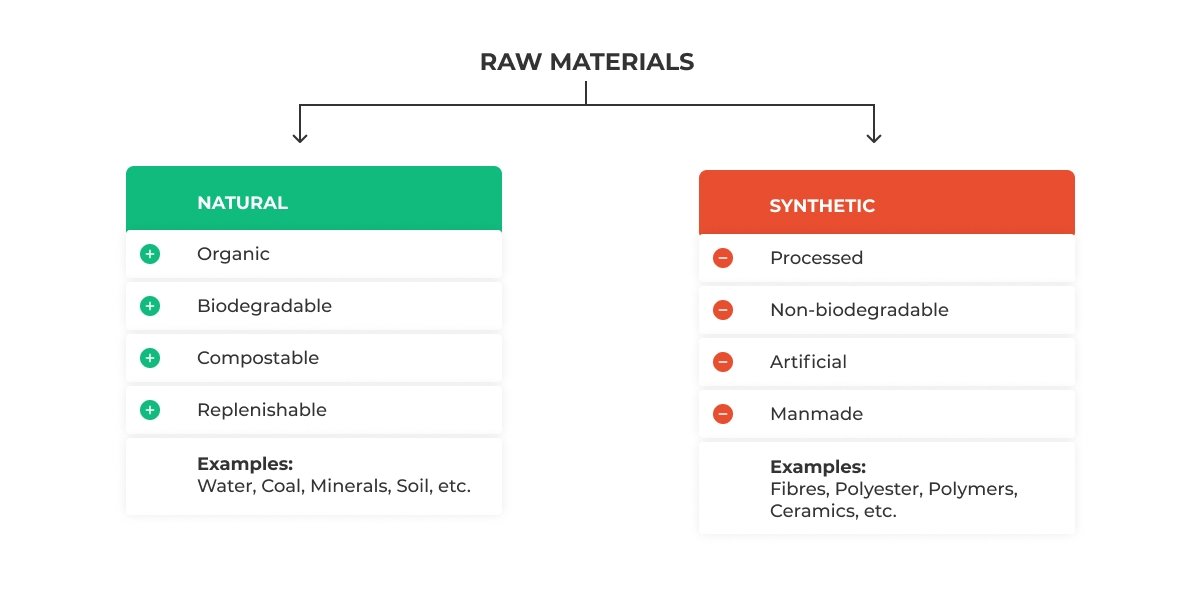
What are natural materials?
The resources which exist in the universe without any human interference are natural materials. These materials or components found in the environment can have various uses and are classified as renewable or nonrenewable. Some natural materials have replenishable qualities; that is, they have the ability to recover within a short period; they are inexhaustible and have regenerative capabilities.
What are synthetic materials?
Synthetic materials are artificial or man-made that have been obtained by chemically altering natural resources to enhance/induce certain qualities, thus increasing the unknown additives in the materials. The biggest downfall is that many of them stay on earth for a much longer time as they are synthesized in a way to make them long-lasting.
Raw materials are differentiated by many factors, a few of them are:
- Availability
- Ability to Decompose
- Environmental impact (post-usage)
- Renewability rate, etc.
Eg. The manufacturing of any wooden product will have the utility of the natural resource, wood. Even though wood is a limited resource, obtaining it from a sustainably managed tree (FSC certified) is a responsible act for maintaining a balance between nature and human livelihood.
Factor II: Manufacturing Emissions

Manufacturing of different products requires the use and processing of different materials using various processes. Some stages of manufacturing release toxic emissions more than others, thus, impacting the environment in a harmful manner. Hence, it is essential for us to be careful about the processes we use in order to manufacture anything.
Carbon emissions are a direct measure of the climate change impact of any activity or product. During manufacturing, the consumption of resources like, water, energy, electricity are considered.
We consider the environmental side-effects during the making of any product where the CO2 emissions are labelled as, low, medium and high as per the base material used.
Eg. The carbon emissions during manufacturing a metallic product will be higher than that of a natural product simply because the production of a metallic product like a steel bowl is an energy-intensive one with the various stages of heating, cooling, annealing (hardening), etc. while the process of making a natural product like a coconut bowl consists of mostly manual operations, use of less electricity, reduced resource consumption, less scrap creation, etc.
Factor III: Packaging
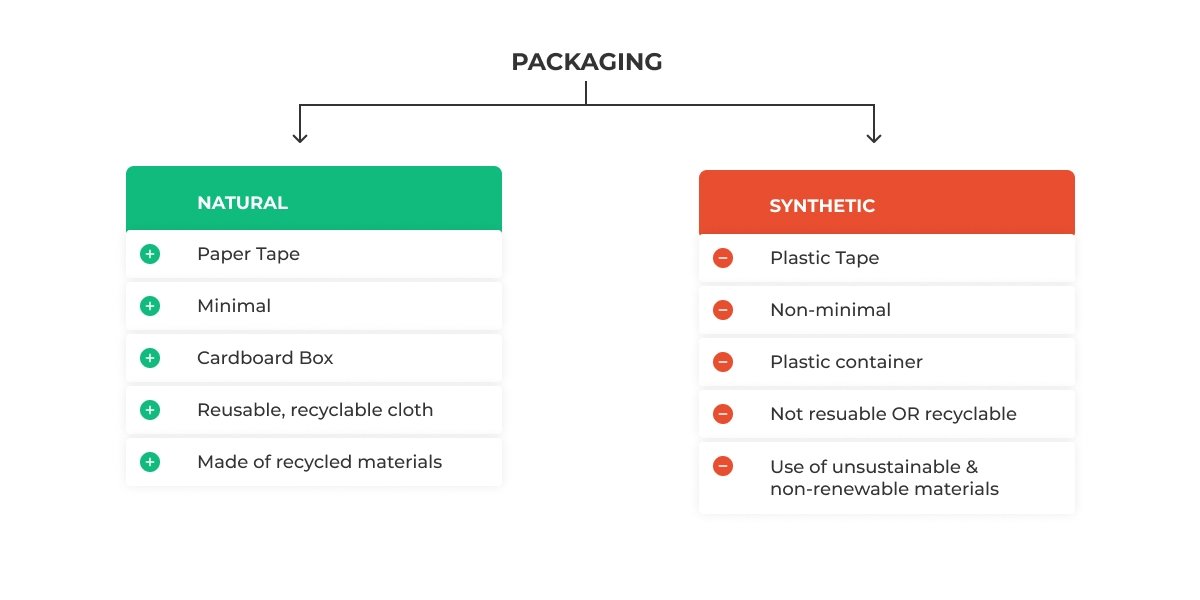
BZ Motto is People, Planet, and Packaging.
As an eco-conscious brand, we try to be as responsible as we can, about the environmental impacts we make during one of the most crucial stages of the supply chain, that is, during transportation, which includes packaging and shipping.
We are all about Minimal Packaging!
For our packaging, we use 100% post-consumer paper boxes and reusable cloth pouches/bags which we obtain from Kattran Market (Delhi), a place where second-life is given to industrial waste.
Slow Shipping = Green Shipping
Okay okay, we know, once you place your order you can’t wait for the products to reach you. We are impatient as well, when it comes to being responsible towards the environment.
Fast & express deliveries means choosing the mode of airways, the transport process of which can cost about 10x more in some cases as compared to other modes of shipping, resulting in higher, unaccounted emissions.
Factor IV: Product Lifespan (Duration of Usage)

The lifespan of a product is the duration for which the product can be successfully utilized without any wear and tear. It is the time between a product purchase and a product discard.
Every product has a deadline that is affected by various environmental and usage factors.
After considering the minimum and safe amount of time for which a product can be used, depending on the depreciation rate of the materials used, we can consider a basic timeline for any product right before which it needs to be replaced.
A suitable example when it comes to varying lifespans of the same product made of different materials is, STRAW. Bamboo: 0.5 years , Plastic: Single-Use, Copper: Lifetime, Steel: Lifetime, Paper: Single-Use, Silicone: 1 Year
LONG TERM AND SHORT TERM INVESTMENTS/ PRODUCTS:
Straws are widely used all over the globe, while it is such a small and simple product, everyone is now aware of the huge impact of dumping straws in the ocean. You can just make a slight switch from a single-use plastic straw to a sustainable one (e.g. bamboo) and make the aquatic life in our oceans happy!
THE USAGE IRONY:
Some products take weeks to be manufactured yet they end up getting utilized for just a few minutes and have a lifespan of fewer than 24 hours.
Example: The process of making plastic from oils is an extensive one; consisting of polymerization processes. But the lifespan of a single-use plastic straw is barely 10-15 minutes!
Even metal straws can be an eco-friendly option, as even though they are energy-intensive to produce, they offset their footprint by being used for a much longer period of time.
Factor V: Biodegradability (End of Life)
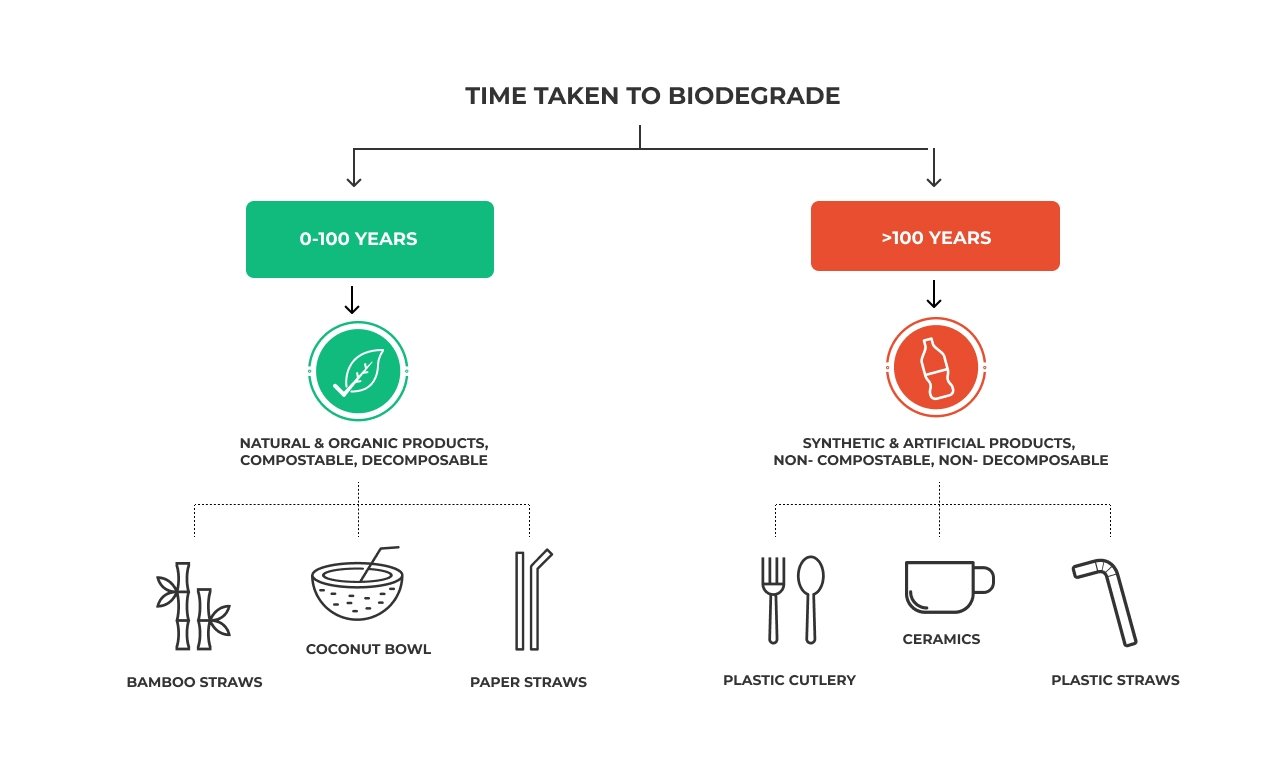
Biodegradability refers to the decomposing ability of any material after interacting with biological elements i.e. the ability to naturally decompose or break down into nature without creating any negative environmental effects. It is the ‘after-life’ stage of any product.
Whether or not a product is biodegradable is quite an impactful point to be considered before purchasing it. When we are aware that the product we are going to end up buying, using, and scrapping will be the cause of danger to marine life or birds due to them ending up in the oceans and landfills, we are bound to make smarter choices.
Factors affecting the biodegradation rate of a product: Micro-organisms, water, light, oxygen, temperature, etc.
The Additional 6th Factor: Repurpose

The best alternative to scrappage and waste creation is the repurposing of any product after its initial usage.
The factor considered here is whether or not this product has an afterlife/ a second life.
Repurpose includes various factors like recycling, reusing, composting, etc. Certain products can be reused for alternate purposes as opposed to their once intended use, e.g. DIY kits/ crafts/ artworks etc. Many products can be recycled; which is the process of converting used materials/products into new ones.
E.g. Toothbrushes can be used for cleaning hard-to-reach corners in the house once they serve their purpose of maintaining dental hygiene and need to be dumped away.
Advantages of Recycling:
- Environmental Conservation
- Pollution Control
- Greenhouse Gas Mitigation
- Awareness of Eco-friendly Practices etc.
CHOOSE WHAT TO REUSE AND WHAT TO RECYCLE
Although it is always better to recycle than to dump any product into the oceans or landfills as scrap, recycling is an extensive process involving stages of segregation, certain emissions and chemicals involved during the stages of collection, transport and processing that have environmental effects. Moreover, it requires money, resources and is time-consuming. Yet it is still less energy-intensive as compared to dealing with their raw initial stages (in case of metals which involves the process of forging, melting, etc.) if you were to compare, reusing a product and recycling a product, like a toothbrush, the better option will be to reuse it for other purposes.
CONCLUSION:
It is not a consumer’s duty to be environmentally friendly, but a brand’s or a company’s duty to provide legitimate eco-friendly products and services. A product’s eco-friendliness should not be an optional feature but a non-negotiable fact. Climate change is real and it’s time for all of us to take action, even if they’re small and lazy ones, like slowly ditching plastic, reduce our daily waste, and try to level up our eco-friendly game.
